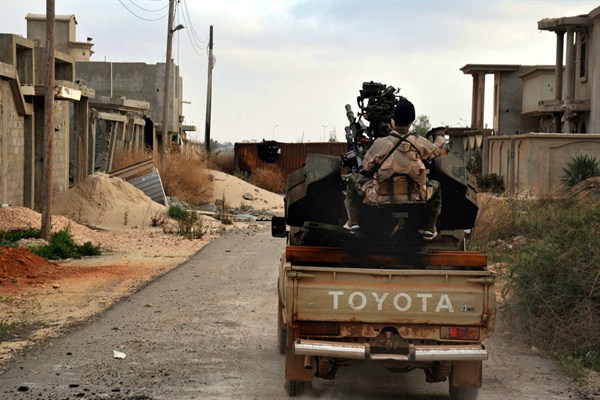Last week, the United States significantly expanded airstrikes in Libya against the self-proclaimed Islamic State, upping its military involvement in a country mired in civil war since a NATO-led intervention helped topple dictator Moammar Gadhafi in 2011.
Libya’s United Nations-backed government in Tripoli, known as the Government of National Accord, or GNA, requested the airstrikes. They have centered on the coastal city of Sirte, where Libyan forces aligned with the unity government have been engaged in fierce street battles with the Islamic State. The strikes have reportedly come from jets launched from a U.S. amphibious assault ship in the Mediterranean and from armed drones flown from a base in Jordan—the first time the U.S. has conducted armed drone attacks from Jordan, a close ally and security partner.
The scope of the bombing campaign is limited for now, as it focuses on backing Libyan troops battling what American officials have said are fewer than 1,000 Islamic State militants in Sirte, a vital city for Libya’s oil industry that the group began taking over in early 2015. These airstrikes have apparently followed an approach that the U.S. has used with increasing effectiveness in Syria: working with local forces to confirm targets and call in airstrikes. Libyans have been trained by American special operations forces, which have been in the country for months.

